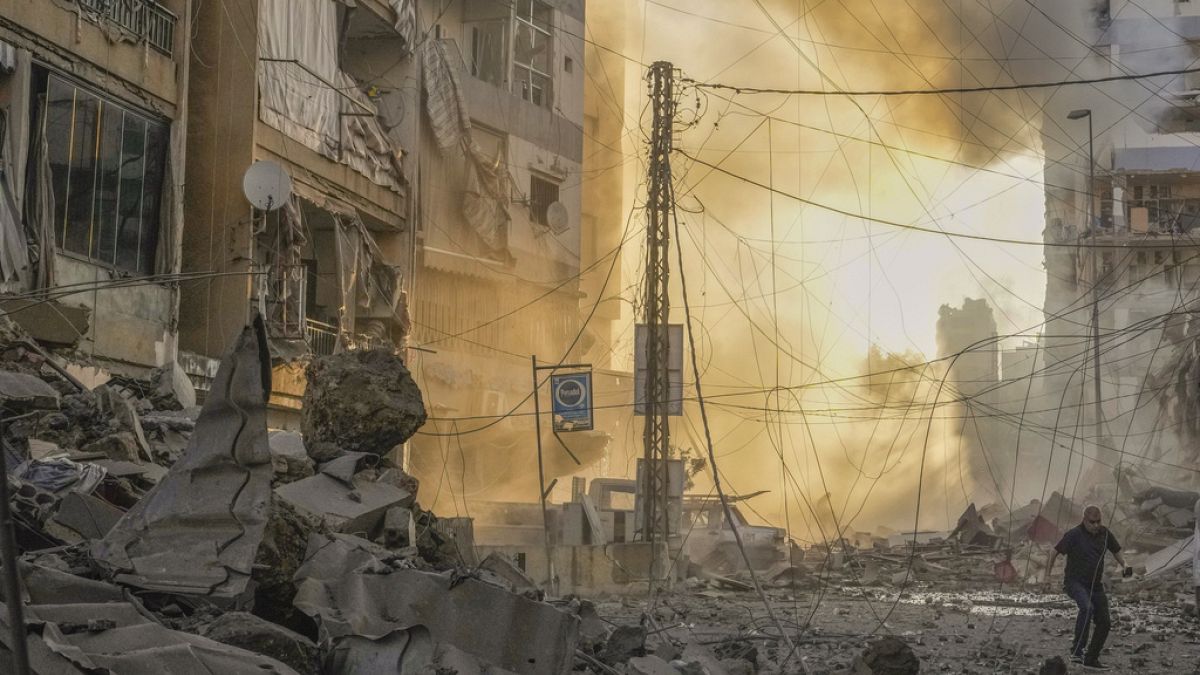Lebanese authorities said Israel’s bombardment had killed 50 health workers in the past three days as Israeli fighter jets continued to launch strikes across the Arab state.
The Israeli military said on Saturday its forces had struck a mosque in southern Lebanon adjacent to a hospital, which it said was being used by Hizbollah fighters as a command centre, while its forces battled the militant group’s fighters in the border region.
A Hizbollah-affiliated hospital in southern Lebanon, The Martyr Salah Ghandour, said it was hit by a strike shortly after the Israeli military issued orders that it be evacuated, according to a statement on Lebanon’s state news agency on Saturday. It said nine staff were injured in the attack on Friday in the town of Bint Jbeil.
A spokesperson from the Lebanese health ministry told the Financial Times on Saturday that 50 medics had been killed in the past 72 hours.
Tedros Adhanom Ghebreyesus, WHO’s director-general, said that the capacity of Lebanon’s health system was deteriorating and that the UN agency’s “medical supplies cannot be delivered due to the almost complete closure of Beirut’s airport”.
“WHO calls on urgent facilitation of flights to deliver health supplies to Lebanon. Lives depend on it!” he said on X.
Israel has issued multiple evacuation orders in recent days, warning people in towns and villages across the south to move north. It has given similar orders during its war against Hamas in Gaza ahead of big offensives.
Iranian-backed Hizbollah said there were clashes with Israeli troops around the Lebanese border town of Odeisseh. The official Lebanese news agency reported shelling of Odeisseh and three other southern villages.
Israel has intensified its assault against Hizbollah over the past two weeks as it has shifted its focus from Gaza to the northern front. It has killed Hizbollah leader Hassan Nasrallah, launched air strikes across Lebanon and sent troops into Lebanon’s south for the first time in almost two decades.
The escalation has heightened fears about all-out war in the Middle East. The region is bracing for Prime Minister Benjamin Netanyahu’s response to an Iranian missile barrage fired at Israel on Tuesday.
Tehran said the missile attack was in response to the assassination of Nasrallah and the killing of Hamas’s political leader Ismail Haniyeh in Tehran in July.
Israel struck the southern suburbs of Beirut on Saturday afternoon targeting the Borj al-Barajna Palestinian refugee camp with four missiles, according to the Lebanese state news agency. Hizbollah said Israel bombed a convention centre in the southern neighbourhood of Dahiyeh overnight. The group used the complex to host events.
Almost 2,000 people have been killed in Israel’s bombardment of Lebanon in the past year, according Lebanese authorities, after Hizbollah started firing missiles at Israel in support of Hamas in Gaza. The majority were killed in the past two weeks, Lebanon’s health minister said.
More than 1.2mn people have been displaced, triggering one of the worst crises for the country in decades.
Abbas Araghchi, Iran’s foreign minister, met Syrian President Bashar al-Assad in Damascus on Saturday, a day after visiting Beirut.
Israel “speaks no other language than war and coercion and continues its crimes in Beirut, southern Lebanon and Gaza on a daily basis,” Araghchi said. He added that he would continue discussions on ceasefire initiatives in Lebanon and Gaza with Syrian officials.
This week there have been indications that Israel has expanded its offensive to include Hizbollah’s civil infrastructure, while also targeting the group’s leaders.
The movement is Lebanon’s dominant political force and has a huge network of social programmes and business interests. On Thursday, Israel struck a Hizbollah-linked medical facility in the heart of Beirut, killing at least nine people, including health workers, as well as a building used by the group’s media relations team in the southern suburbs.
The strike on a Palestinian refugee camp in the northern city of Tripoli killed Saeed Atallah Ali, a commander of its Qassam Brigades and his family in the early hours of Saturday, Hamas said. A second Hamas leader, Mohammed Hussein al-Louise, was killed in an air raid in the Bekaa Valley.
In northern Israel, air raid sirens sounded as Hizbollah launched rocket barrages. The Israel Defense Forces said the militant group shot 222 projectiles at Israel on Friday.
It said it had killed 250 Hizbollah fighters, including four battalion commanders, since the start of the ground offensive in Lebanon this week.
Nine Israeli soldiers have been killed in clashes with Hizbollah in southern Lebanon as the fighting intensified.
Joe Biden has urged Israel to make a “proportional” response to Iran’s missile strikes, and to avoid targeting Iranian nuclear sites or oil infrastructure. But the president has also made it clear that the US supported Israel’s military riposte.
“The Israelis have every right to respond to the vicious attacks on them, not just on the Iranians but on everyone from Hizbollah to the Houthis,” Biden said.
Additional reporting by Bita Ghaffari in Tehran























/cdn.vox-cdn.com/uploads/chorus_asset/file/25439572/VRG_TEC_Textless.jpg)






